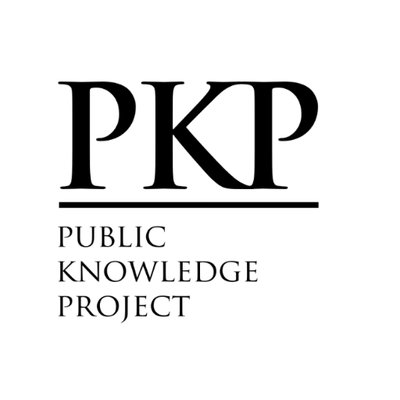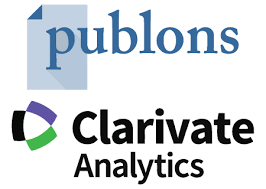Credit Management as a Predictor to the Sustainability of Microfinance Institutions
a portfolio quality analysis
DOI:
https://doi.org/10.59051/joaf.v14i2.665Keywords:
Debt recovery, Debt policy, Recovery techniques, Profitability, SustainabilityAbstract
Purpose: This study was carried out to understand the relationship between credit management and the financial performance of Micro Finance Institutions, taking a sample of 43 MFIs administrators in the towns of Dschang, Mbouda and Bafoussam of Cameron.
Method: The study applied a quantitative research design, where questionnaires were used. Data was collected from both primary and secondary sources. Data was processed and analyzed using formal tables, pie charts, multiple linear regressions, and Anova, chi-squared, Cronbash’s Alpha, Pearson tests were carried out to understand the relationship between credit management and financial performance Microfinance Institution in Cameroon. A total of 43 respondents were considered out of the entire population.
Findings: Findings indicate that credit policies, debt recovery technique mechanisms are significant and positively related to the portfolio quality of MFIs in Cameroon. More specifically, good lending policies such as proper study of the loan documents, group liability, monitoring repayment frequency would increase financial performance. In addition, recovery techniques such as constant customer reminder, prolonging recovery period, penalties etc, enabled MFIs to perform financially well.
Originality value: This study explores and shed light on an important factor responsible in majority for the unpaid installment debts in the Cameroon context; the MFI itself through the personal and friendly relationships with clients. Thus we provide practical strategies for the recovery of these debts till the last franc. In addition, we show that these strategies increase MFI’s sustainability across their profitability.
Downloads
References
Abedi, S, 2000, « Highway to Success », Credit Management Journal, http://leatherspinters.com
Agbola, F. W. al., 2017, « Does Microfinance Reduce Poverty? New Evidence from Northeastern Mindanao, the Philippines », Journal of Rural Studies, 159-171. doi:https://doi.org/10.1016/j.jrurstud.2016.11.005
Armendáriz, B, Morduch, J, 2005, « The Economics of Microfinance. London, England » The MIT Press, Cambridge, Massachusetts.
Arora, A. Kumar, M, 2015, « Evaluating the Credit Risk Management Framework of Public and Private Sector Banks in India: A Comparative Study », the IUP Journal of Bank Management, Vol, 8, p. 57-66.
Bennet, P, 2008, « Applying portfolio theory to global bank lending », journal of banking and finance.
Bitok, S. K, Cheboi, J. Y, Kemboi, A, 2020, « Does Portfolio Quality Influence Financial Sustainability? A Case of Microfinance Institutions in Kenya », Asian Journal of Business Environment, Vol, 10, p, 37-43
Churchill, C. F, 1999, « Client Focused Lending: the Art of Individual Lending », Toronto: Calmeadow.
D’Espallier, B, Jann, G, Marek, H, Roy, M, 2017, « From NGOs to Banks: Does Institutional Transformation Alter the Business Model of Microfinance Institutions? », vol. 89, issue C, P.19-33.
Dhakal, S. 2011, « Risk management in SACCOs, Econometric Analysis ». Second Edition
Macmillan. London.
Goodluck, C, and Neema, M, 2016, « Effects of Collateral on Loan Repayment: Evidence from an Informal Lending Institution », Journal of African Business, Taylor and Francis Journals, vol. 17(2), p.254-272,
Haron, O. M, Justo, S. M, Nebat. G. M, Mary, N. S, 2012, « Effectiveness of Credit Management System on Loan Performance: Empirical Evidence from Micro Finance Sector in Kenya », International Journal of Business, Humanities and Technology, Vol, 2, No.6.
in Fifty Years, Part II, Financial System.
Karanja, G, 2009, « The Effect of Credit Risk Management Practices on the Level of Non-performing Loans. A case study of commercial banks lending to SMEs in Kenya ».
Kwadwo, O, Redeemer, Y. K, 2016, « Default Risk and Debt Recovery Strategies of Microfinance Institutions: A Comparative Study of MFIS in Ghana », European Journal of Business and Management, Vol, 8, No.21.
Markowitz, H. M, 1959, « Portfolio Selection: Efficient Diversification of Investments ». New York: John Wiley and Sons.
Matthew, A. L, and Felicia, O. Olokoyo, 2018, Deposit Money Banks Loan Recovery Strategies and Customer-bank Relationship », European Journal of Business, Economics and Accountancy Vol, 6, No. 3.
Montana, D, 2012, « Strategies for Debt Recovery: Improve Bank Debt Collection Success » Retrieved from: http://www.articlesbase.com/banking-articles/improve-bank-debt collection success- using-these-strategies-3663261.html
Moraa, J. K, Oluoch, O, 2021, « Influence of lending terms on loan performance of microfinance institutions in kisii county (case study; kenya women microfinance bank) », International Academic Journal of Economics and Finance, Vol, 3, p. 21-44.
Nagarajan, M, 2011, « Credit risk management practices for microfinance institutions in Mozambique ». Unpublished MBA project-University of Maputo.
Nikolaidou, E. Vogiazas, S. D, 2014, « Credit Risk Determinants for the Bulgarian Banking System », International Advances in Economic Research, 20(1)
Nkusu, M. M, 2011, « Nonperforming Loans and Macrofinancial Vulnerabilities in Advanced Economies », International Monetary Fund, https://doi.org/10.2139/ssrn.1888904
Nyorekwa, T, 2014, « Monetary policy performance in Tanzania Banks and Bank Systems », Vol, 9, Issue 4.
Nzongang and al., 2010, « The determinants of loan delinquency in urban microfinance institutions: the case of MUFFA (Financial Cooperative of African Women) in Cameroon.
Nzotta, S, 2004, « Money, banking and finance: Theory and practice », Owerri: Hudson— Jude Nigeria Publishers.
Ochieng, P, 2012 « Determining Loan Recovery among Women Owned Enterprises in Kenya. A case of Eldoret Municipal », Lambert Academic Publishing.
Olokoyo, F, 2011, « Determinants of Bank Lending Behaviour in Nigeria », International journal of financial research.
Olomola, A, 2002, « Credit Control Policy for Improved Agricultural Financing in Nigeria. Panacea, Placebo or Structural Bottleneck? », African Review of Money Finance and Banking, Vol, 1, p. 23-38.
Owino, M, 2012, « Effect of the Lending Policies on the Levels of Non-performing Loans (NPLs) on Commercial Banks of Kenya ».
Paudel, N. P, 2005, « Financial system and economic development », Nepal Rastra Bank
Sarma, G. K, Borbora, Saundarjya, 2012, « Sustainability of microfinance under microfinance institution model: a case of Assam, Finance India », quarterly journal of Indian Institute of Finance, Vol, 26, p. 471-488.
Shannon, D, Shimeless, T, Dan, N, Burnham, 2005, « Credit program outcomes: coping capacity and nutritional status in the food insecure context of Ethiopia », Soc Sci Med, Vol, 60, p.2371-82.
Sheilah, A. L, 2011, « Lending Methodologies and Loan losses and Default in a Microfinance Deposit Taking Institutions in Uganda; a research report presented to the Makerere University Uganda ».
Stiglitz, J. E, Weiss, A, 1981, « credit rationing in markets with imperfect information », American Economic review, 71(3).
Yunus, M, 2007, « Creating a World without Poverty: Social Business and the Future Capitalism », New York: Public Affairs.
Yunus, M, 2017, « A World of Three Zeros: The New Economics of Zero Poverty, Zero Unemployment, and Zero Net Carbon Emissions », New York: Public Affairs
Downloads
Published
How to Cite
Issue
Section
License
Copyright (c) 2024 hippolyte nkeng TENENG, Enna Nuobia KEHDINGA

This work is licensed under a Creative Commons Attribution-NonCommercial-NoDerivatives 4.0 International License.
Authors who publish with this journal agree to the following terms:
- Authors retain copyright and grant the journal right of first publication with the work simultaneously licensed under a Creative Commons Attribution License that allows others to share the work with an acknowledgement of the work's authorship and initial publication in this journal.
- Authors are able to enter into separate, additional contractual arrangements for the non-exclusive distribution of the journal's published version of the work (e.g., post it to an institutional repository or publish it in a book), with an acknowledgement of its initial publication in this journal.
- Authors are permitted and encouraged to post their work online (e.g., in institutional repositories or on their website) prior to and during the submission process, as it can lead to productive exchanges, as well as earlier and greater citation of published work (See The Effect of Open Access).






















